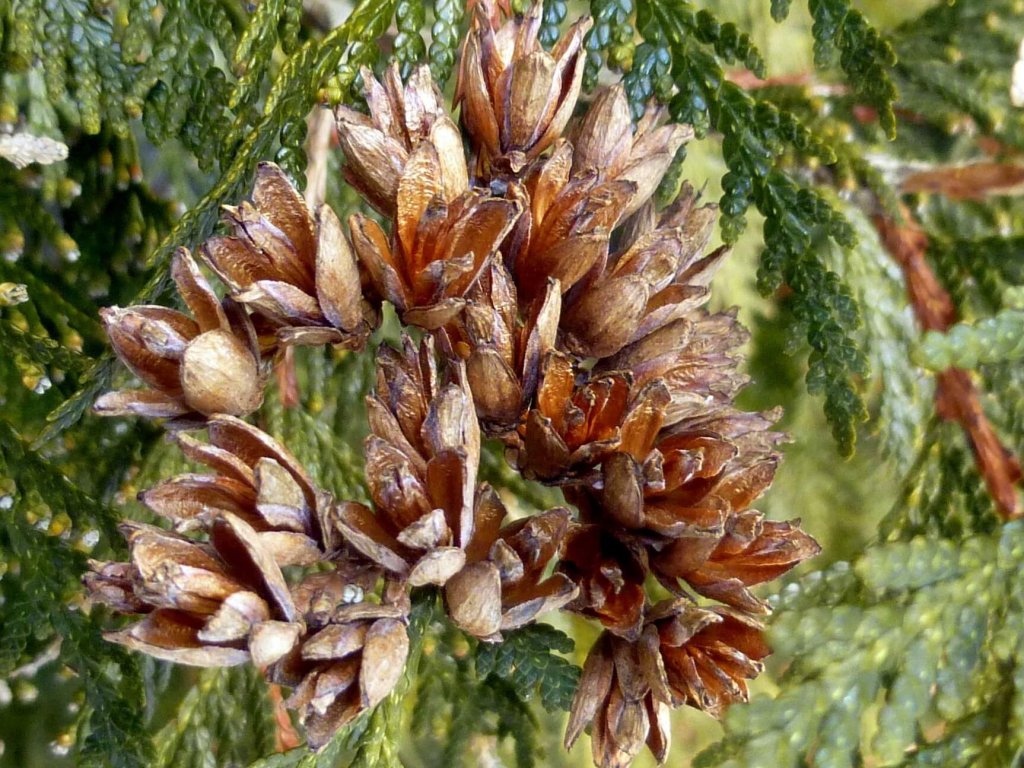Cedar trees, with their evergreen beauty and distinctive scents, are a magnificent addition to the natural world, thriving in diverse regions from the Western Himalayas to the Mediterranean.
This cedar tree identification guide delves into the world of cedar trees, which are often categorized under pine trees due to their similar characteristics.
These majestic trees, found at elevations of 1,500 to 3,200 meters in the Himalayas and 1,000 to 2,200 meters in the Mediterranean, are not just visually appealing but also offer a sensory experience with their unique aromas.
The guide explores two main categories of cedar trees: True Cedar Trees and False Cedar Trees.
Each category and species has its own distinct traits, from massive trunks to bushy foliage, reflecting the diversity and beauty of these trees.
This guide aims to provide a comprehensive understanding of cedar trees, highlighting their unique attributes and the significant role they play in their native landscapes.
The two main categories of Cedar Trees are:
True Cedar Trees
There are four species of actual Cedar trees. They are often found near the oceans and are native to The Himalayas and the Mediterranean. All the actual Cedar trees are evergreen, their leaves are pointed like a needle, and their branches have a spicy scent.
Their bark is reddish-brown, and they require full sunlight to grow. The four True Cedar trees are:
1. Atlas Cedar

Atlas Cedar, a true cedar tree, is native to the Atlas Mountains in Morocco and Algeria. It’s known for its majestic, pyramid-like shape and lush, bluish-green needles.
This cedar tree identification guide highlights its unique, horizontally tiered branches, which provide a striking architectural effect.
The tree is drought-resistant once mature, making it an excellent choice for landscapes that experience varied weather conditions.
Atlas Cedar is used decoratively in parks and large gardens, and its wood is valued for its durability and aromatic qualities.
Identification
- These trees can reach up to 115 feet in height. However, if you use them as an ornament, they grow up to 60 feet in height and 40 feet wide.
- Full to partial sunlight is required for this tree to grow and plenty of space to spread itself.
- Well-drained and loamy soil is what will make this tree grow beautiful and healthy.
2. Deodar Cedar
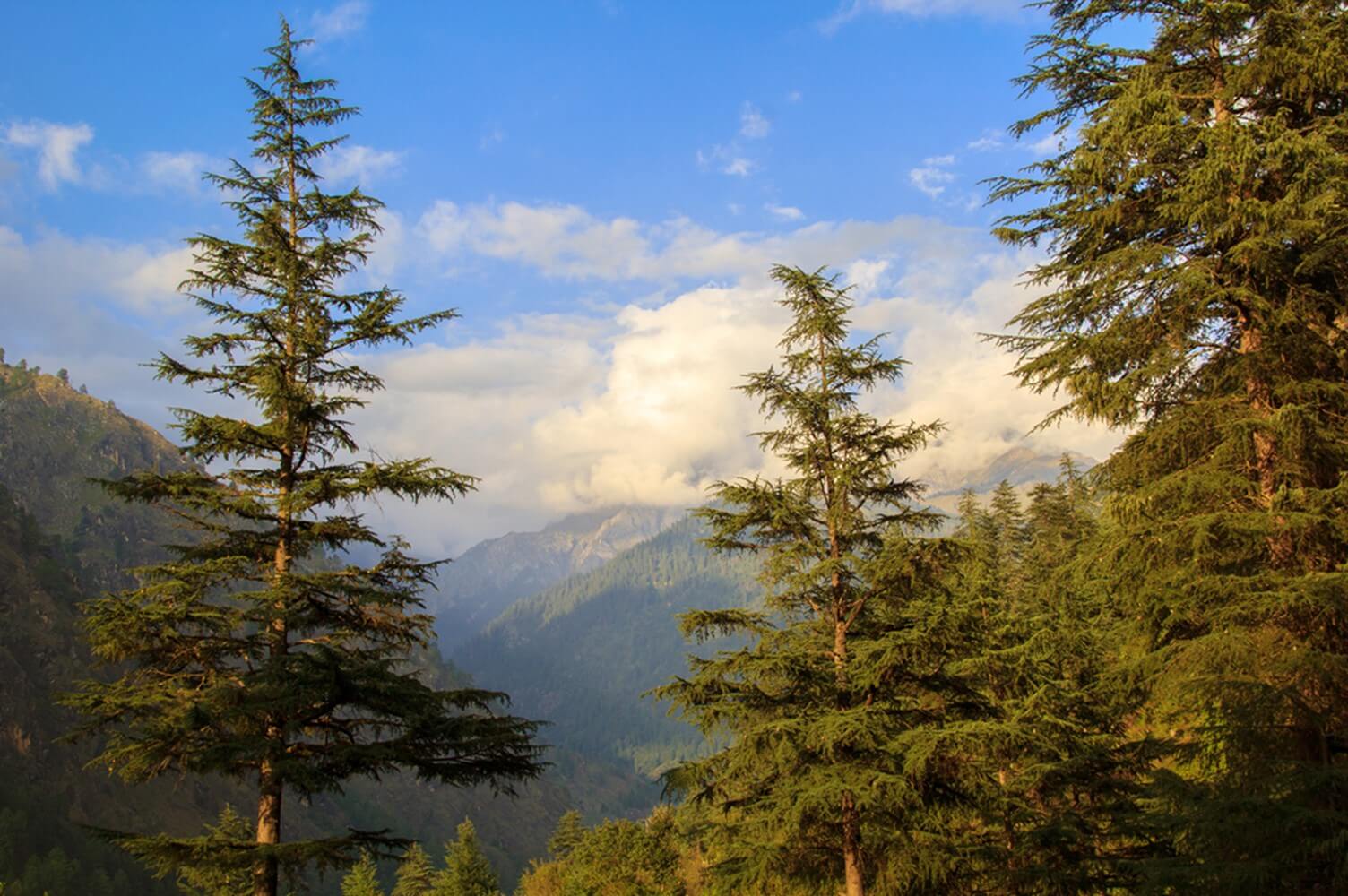
Deodar Cedar, also known as Himalayan Cedar, is a species native to the Himalayas.
This cedar tree identification guide describes it as one of the most elegant cedar species, with a graceful, drooping form and a pyramid-like shape.
The tree is revered in Hindu culture, known as the ‘tree of the gods’.
Its wood is highly valued for its durability and aromatic properties.
Identification
- These can grow up to 160 feet in height naturally. As an ornament, they can grow up to 50 feet tall and 30 feet wide.
- The best part about this tree is that it can be exposed to full sun, high levels of humidity that help it grow.
- Well-drained, moist soil is better for this tree. It is drought-resistant once it matures but still requires moist soil for its longevity.
3. Cedar of Lebanon

By the name, you can guess that this tree is native to the mountain regions of the Eastern Mediterranean and mainly Lebanon.
This tree is in Lebanon’s flag marking its importance too. This type of tree grows slowly, so much that it can take years to grow properly and become mature.
It forms a pyramid shape when matured, but its upper branches turn into an open flat shape.
These trees have a large trunk and have dark green needles and produce cones.
Identification
- Cedar of Lebanon trees, when grown in their native country and reach up to 130 feet in height, but anywhere outside their native place, they grow up to 40-80 feet high and 30-70 feet wide.
- These trees survive on well-drained soil, be it in their native country or even outside.
- This tree thrives in cold temperatures; hence it is a cold climate tree. It matures fully in September and can tolerate cold temperatures easily.
4. Cyprian Cedar
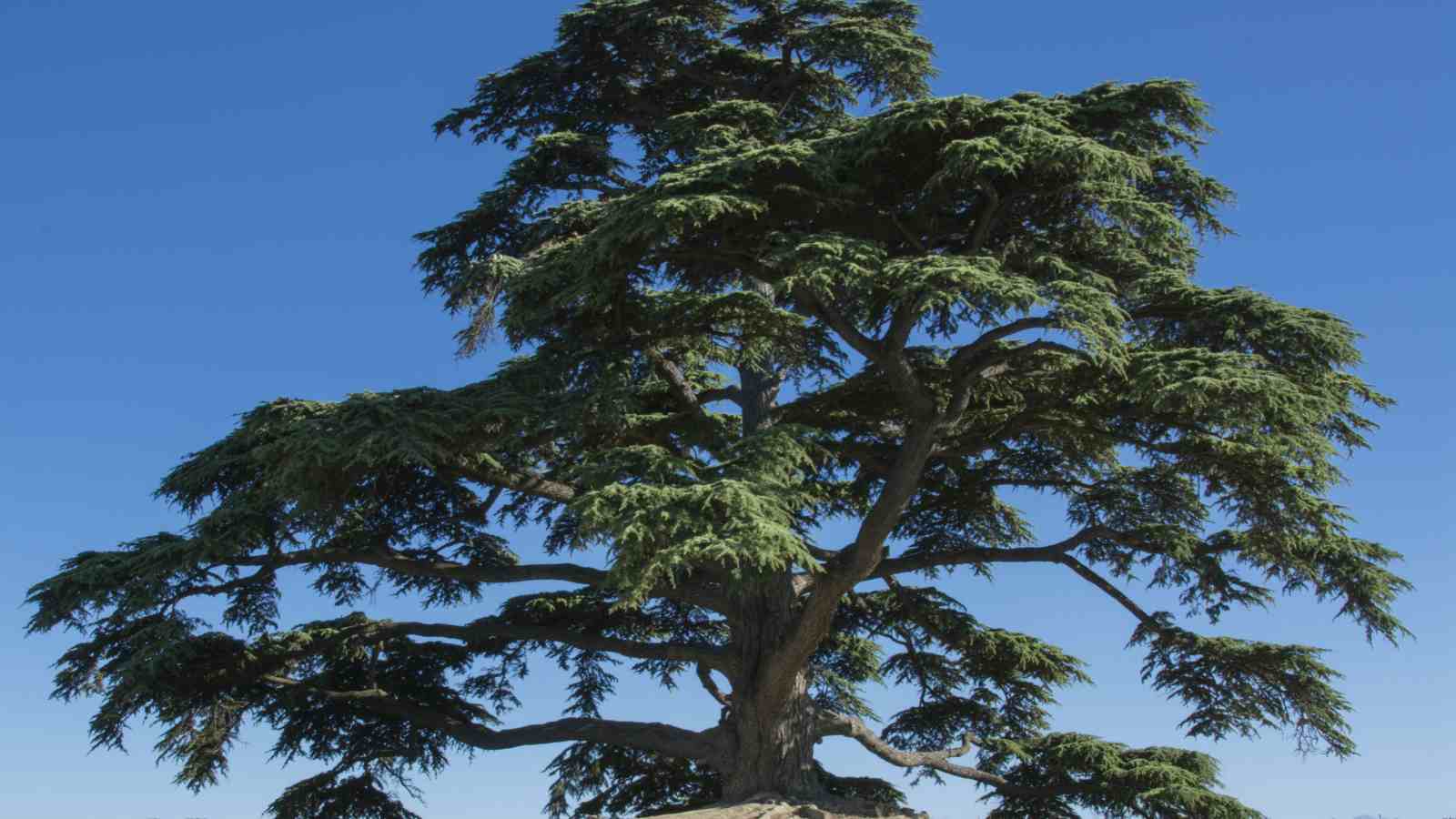
Cyprian Cedar is native to the Island Cyprus and Paphos, Troodos, and Tripylos. Since these are the rare places anyone ever goes to, this tree is quite rare.
You will not find anyone growing this tree anywhere else.
Being a rare species, it is equally mesmerizing. It is pretty like the Cedar of Lebanon, except for the fact that it is tiny.
It is small in every aspect, like tiny needles, small cones, etc. The needles represent dark blue-green color and a neat form of growth.
Identification
- In its native area, this tree grows up to 80 feet tall, and when using as an ornament, grows up to 50 feet tall.
- It requires full sunlight to grow, and even though this tree is small, it still needs ample space to grow. You can still count it as a large tree.
- It requires well-drained soil to grow, and it can tolerate a few days of dry soil, however water it occasionally to have a smooth growth.
False Cedar Trees
These trees do not majorly fall in Cedar trees, but they all have characteristics that match Cedar trees.
All these trees are evergreen, coniferous with needle-like leaves and a bushy, dark green foliage, just like the True Cedar trees have. Let us have a look at some of the false Cedar trees.
1. Alaskan Yellow Cedar
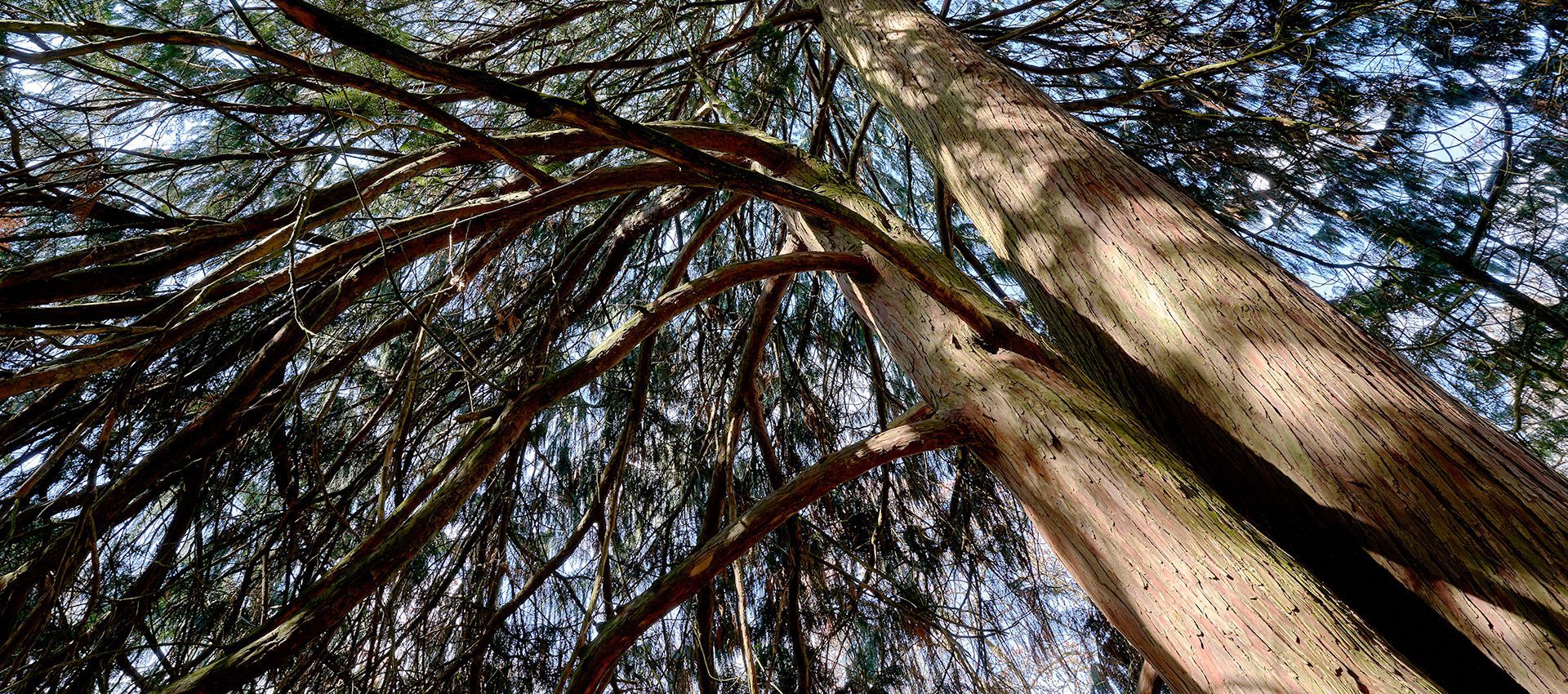
This tree is native to North America, mainly the coastal areas. It is a slow-growing Cedar tree that stoops a bit and has dark-green foliage.
Its wood is used for many purposes. Earlier, it was considered one of the world’s finest woods and was used as a part of the flooring.
To date, this tree’s wood is used for carpentry, flooring, furniture, etc. The leaves of this tree are very prickly, so you must be careful while picking them up.
The main feature of this tree is the drooping branches it has. No other Cedar trees, be it true or false, have these types of branches.
Identification
- This wood is used as timber because of its rugged, weather-resistant, and away from insects’ properties. These properties are what make this tree so unique.
- These trees, when grown in their native environment, reach a height of 130 feet. More the height, more the wood, and hence, more things can be produced with it.
- This tree requires full or partial sunlight to grow. Although it is not a massive tree, it still needs ample space to grow.
2. Spanish Cedar
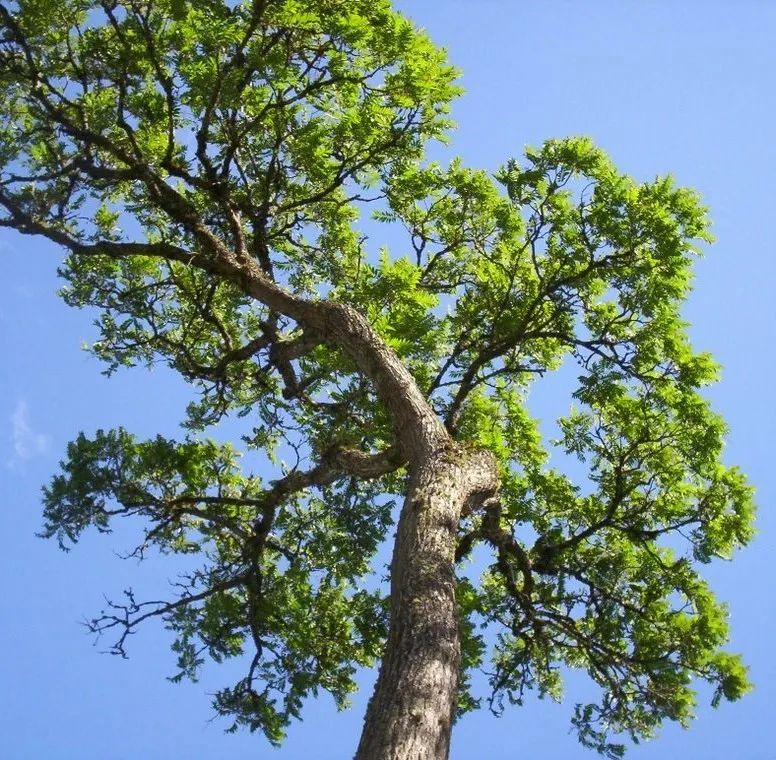
These trees are born or native to the forests of the Caribbean, Central, and North America.
This tree is unique as its wood is pinkish. Its wood, like the Yellow Cedar, is used for lumber purposes.
Being not a ‘True Cedar,’ it is the scent is much like a ‘True Cedar.’ It has got a spicy scent to it.
The wood of this tree is used to make cigar boxes.
These trees have now become quite vulnerable due to rapid deforestation.
Its wood is like that of mahogany, making it an ideal use for home furniture.
Identification
- This tree in its native area grows up to 100 feet. However, this tree is also available at the height of 30 feet in few places.
- It requires well-drained, moist soil to grow. A medium amount of water is required on an occasional basis.
- It is heat-resistant, but you must keep the soil moist and not dry.
- This tree needs the full effect of sunlight to grow, which is why they are heat tolerant. They can survive in hot and humid climates.
3. Northern White Cedar
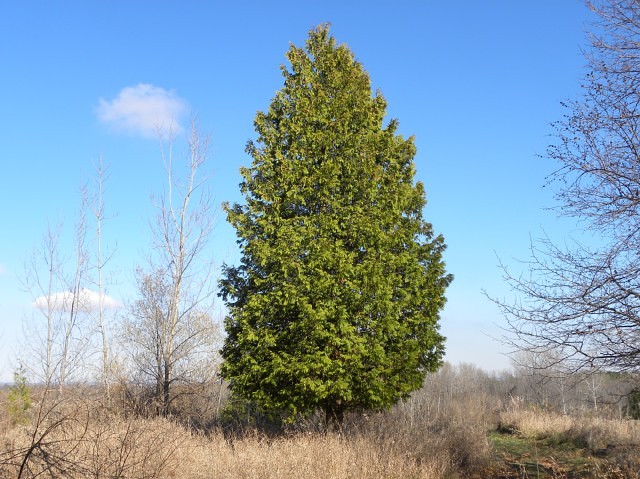
You can either call this a dwarf tree or a bush because its average height is 50 feet.
It takes a pyramid’s shape, with dense branches and thick dark-green foliage, making it look like a little Christmas tree.
Its needles are dark-green and present with an earthly fragrant, which is one of its unique features.
This tree is primarily native to North America, but it can be found in many parts of Europe.
This tree is also known as ‘Arborvitae,’ meaning the tree of life.
The Indians believe that this tree can cure you.
Identification
- This tree can grow up to 50 feet tall, shaping like a pyramid from the top and coming down in a crown’s shape.
- Since this tree grows slowly, it prefers any soil to grow. However, it is recommended to keep its soil well-drained and moist.
- When these trees are young, expose them to full sunlight, which will be beneficial for their growth, and when they are mature, then partial to full sunlight will be enough.
4. Western Red Cedar
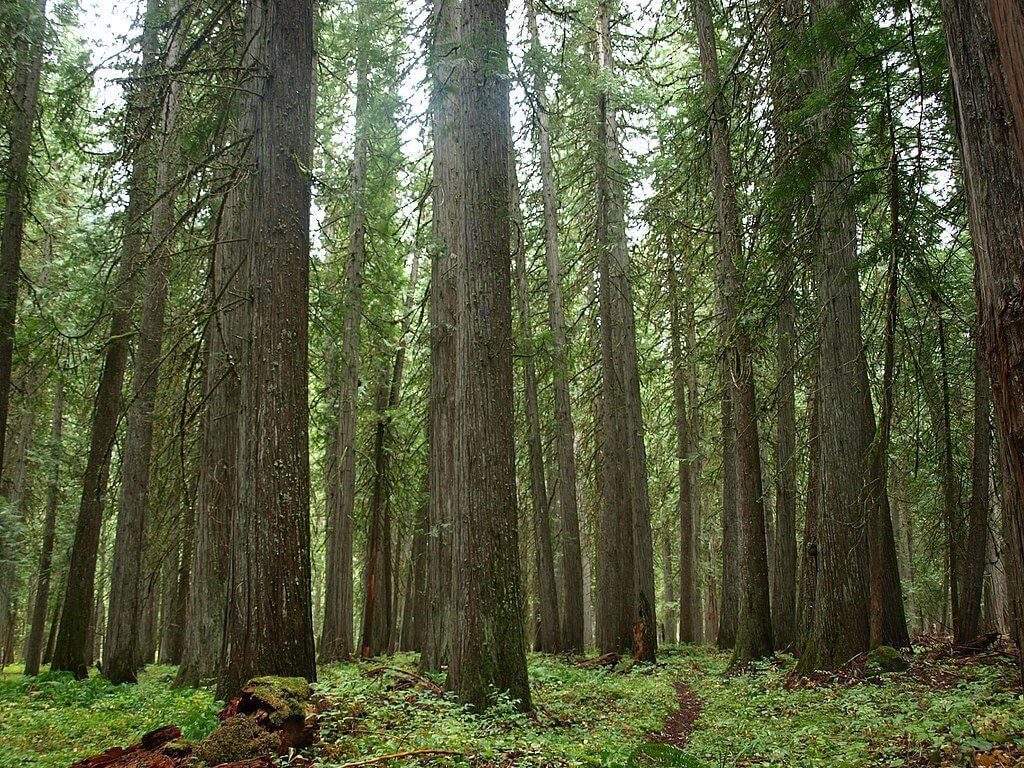
Red Cedar belongs to the Cupressaceae category and is a cypress tree native to the northwest/Pacific Coast of the United States and Canada.
These trees are popular to use as ornaments and for timber purposes.
They take up a pyramid shape and have broad and strong branches.
Their brank color is either cinnamon-red or brown, which is why it is called Red Cedar.
This tree has egg-shaped cones, and their branches shed irregularly.
Identification
- The main feature of this tree is that it is exceptionally tall, mainly all trees grow up to 200 feet in height, apart from this they are also known as a long-lived tree, with one such tree that existed for 1,000 years.
- This tree has bright green leaves, making it a popular choice. The leaves, when crushed together, release a sweet scent resembling that of a pineapple and will be perfect to use as an ornament.
- It requires a medium level of watering; therefore, its soil should be well-drained and moist.
- It also needs full to partial sunlight for its growth.
5. Eastern Red Cedar
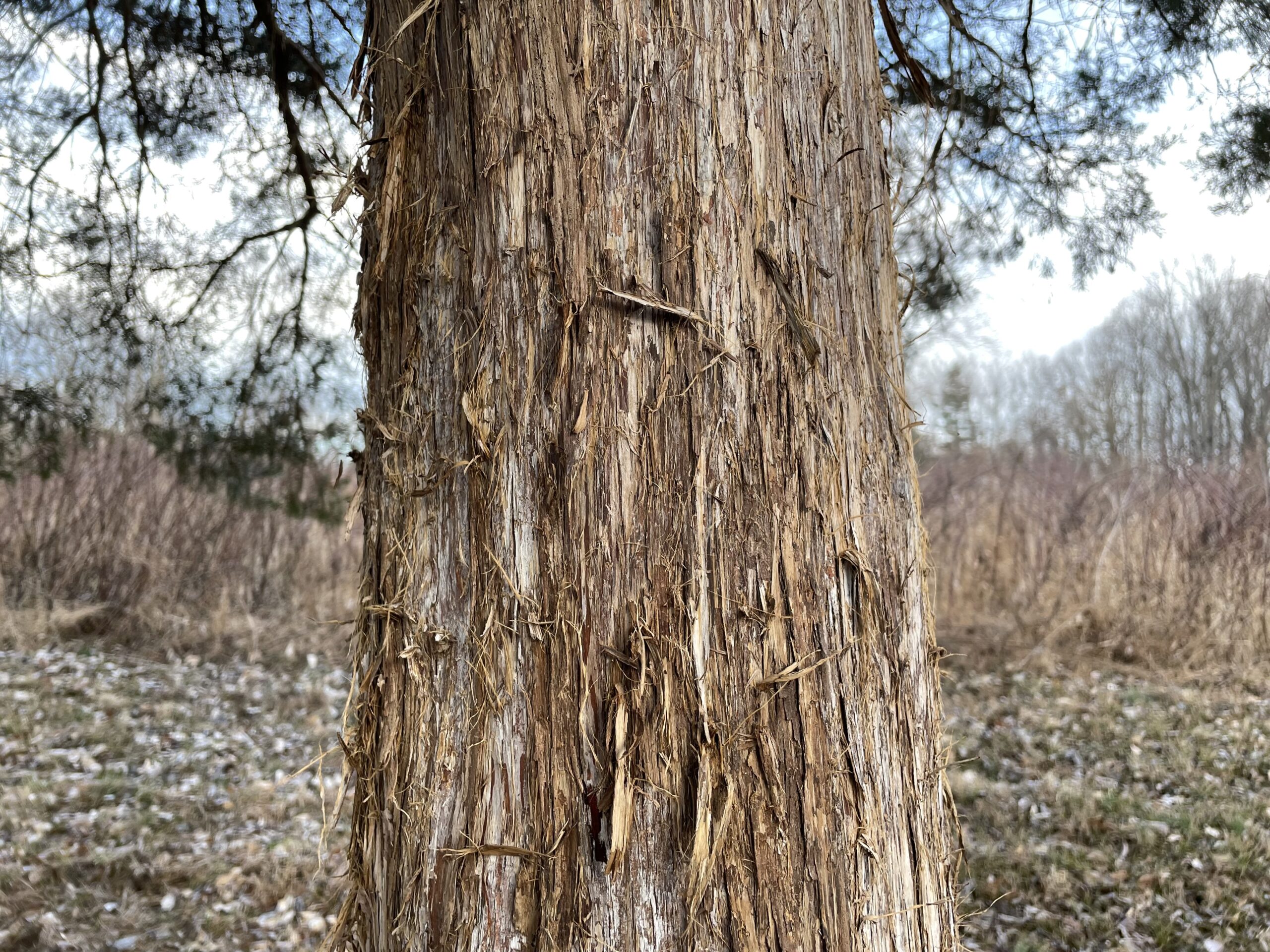
This tree is native to North America and is an invasive species, although it is also a slow-growing tree.
Some Eastern Red Cedar trees do not grow up to the fullest and remain dwarf trees. This tree’s most valuable part is its wood.
It serves many purposes like it can be used as a part of your furniture, for example, drawers, chest, cabinets, etc.
It can also be used as a fence for your garden since it does not rot and is moth resistant.
Identification
- This tree is a member of the Juniper family and takes up a pyramid shape while growing.
- This tree’s unique feature is that its cones are shaped as berries that the Easter cedar wings love to eat.
- This tree needs lots and lots of space to grow as it spreads itself over a vast area.
- It also requires full to partial sunlight for growing. Its foliage presents cover or shelter for all birds.
- Eastern Red Cedar can grow up to 15-60 feet tall when it is fully matured. However, they can also be small, taking the shape of a bush.
- It all depends upon the factors like soil, water, sunlight, and various others.
6. Bermuda Cedar
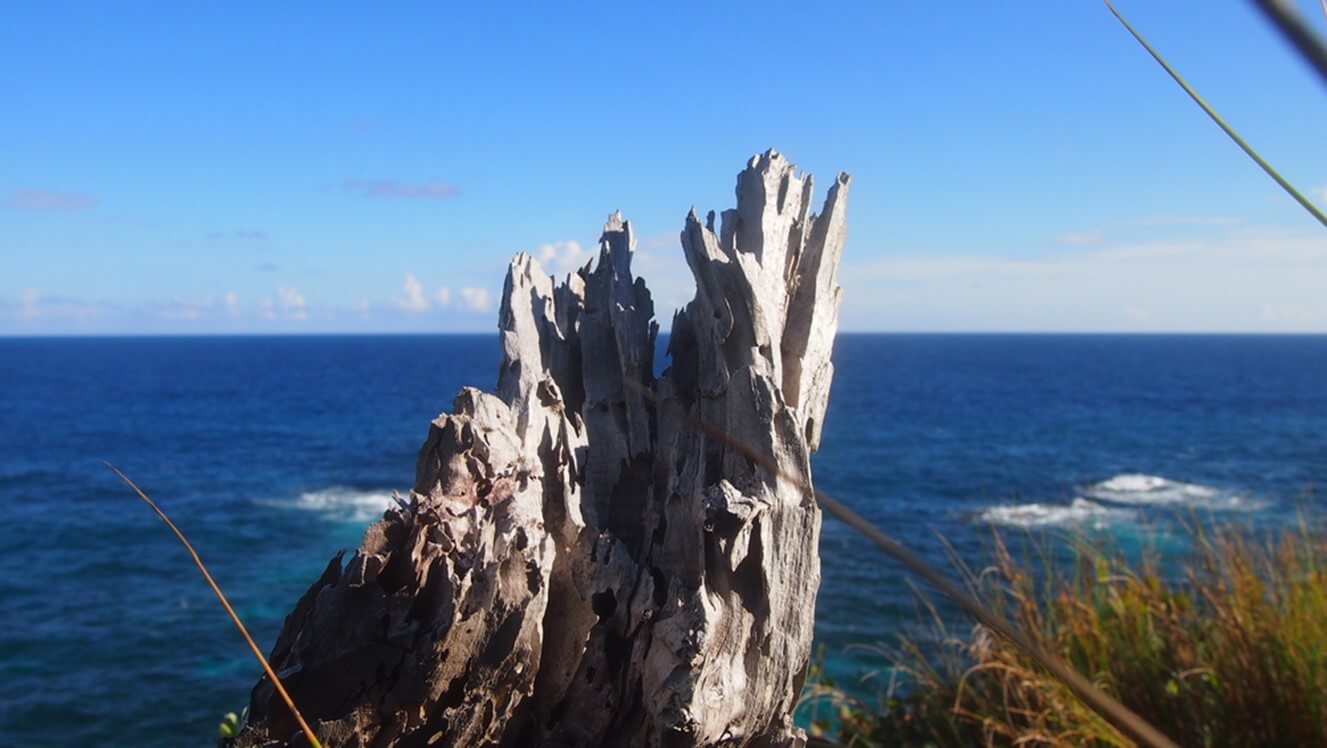
This tree is native to the island of Bermuda and cannot be found anywhere else. It is vast and covers almost all the island.
This tree is considered an endangered species because the island was the first subject to mortality by the people who visited there, and then there was a massive swamp of insects that killed the tree, mainly two species of scale insects.
Approx 90%of these trees were killed, but there has been some new growth seen today.
With the tree being killed, the population was also suffering, and nothing could be done. Thankfully now there is some hope.
Identification
- This tree grows up to 15 feet in height and 60 feet wide.
- Earlier, some species grew even more significant than 15 feet.
- Its bark is relatively thin and is filled with stripes.
- This tree’s foliage is blue-green, and the leaves are scale-shaped and usually placed in opposite directions.
- Their cones are soft, shaped like a berry, change their color from green to bluish/purple in females and brown in males.
- This tree is famous for its reddish timber for making furniture, heavy and sweet aroma, and rot-resistant; it is as strong as oak but much lighter.
- You can use this for your home furnishings, both inside and outside.
6. Incense Cedar
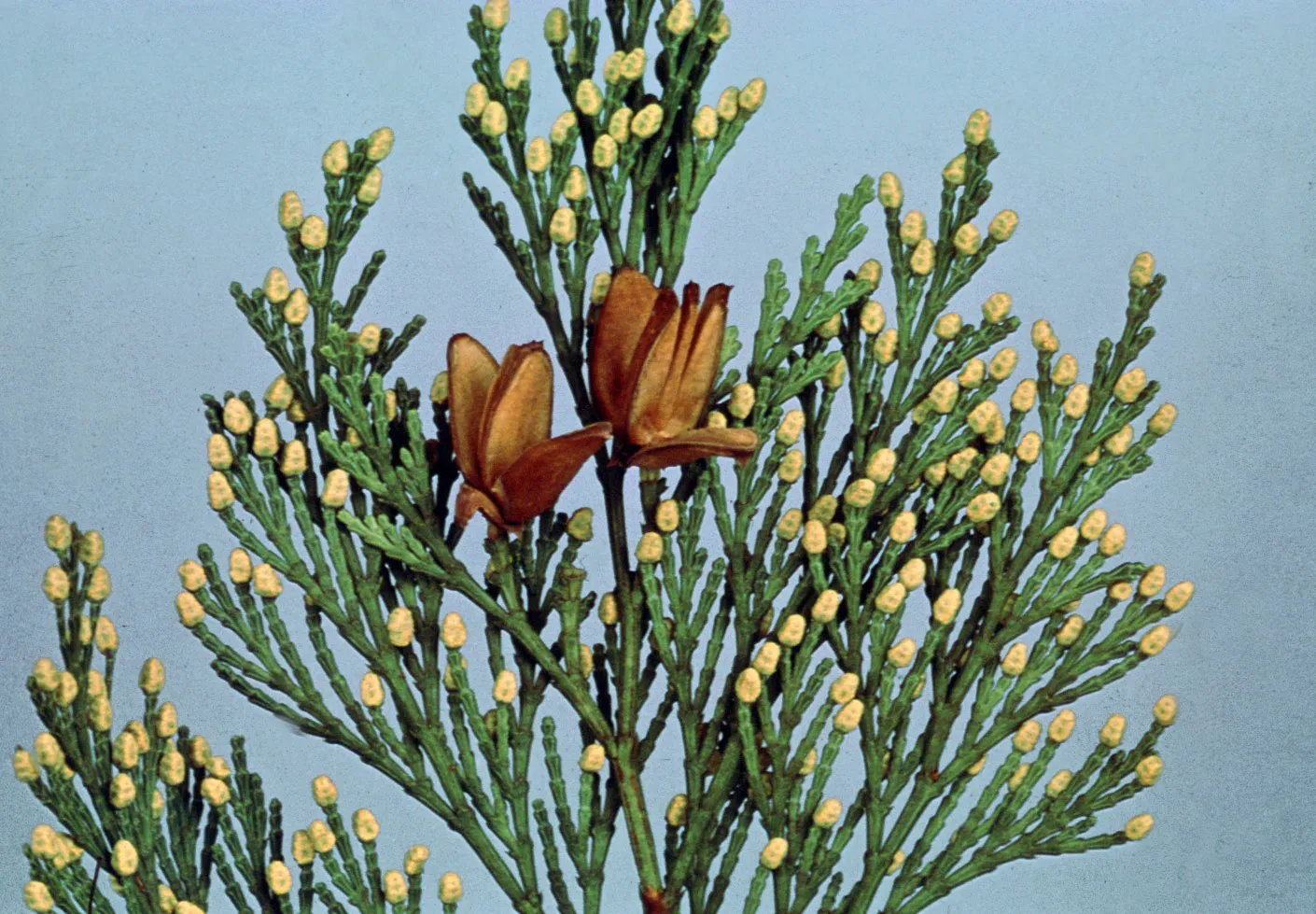
By the name, only you can guess why this false cedar tree is famous. It is because the tree brings out a delicious fragrance that no other tree can.
This tree is trendy in garden stores, where it is being sold as a part of decorations during Winters or any other season.
They are native to California and western North America and display a cone shape.
This tree is heat-resistant and can survive mostly all types of temperatures.
Identification
- This tree has a straight body, reddish in color, with furrowed barks, and spreads vastly all over, with dark green foliage all over it.
- The tree includes both young and mature leaves at the same time.
- This tree grows up to 66-152 feet tall with 4 inches in diameter.
- They have sometimes been seen to grow much higher at about 225 feet tall with 12 feet.
- This tree’s timber is used for purposes like making furniture, including pencils, carpentry, cabinets, chests, and many more items.
- You can use them for any other interior project of your home or even outside.
7. Siberian Pine
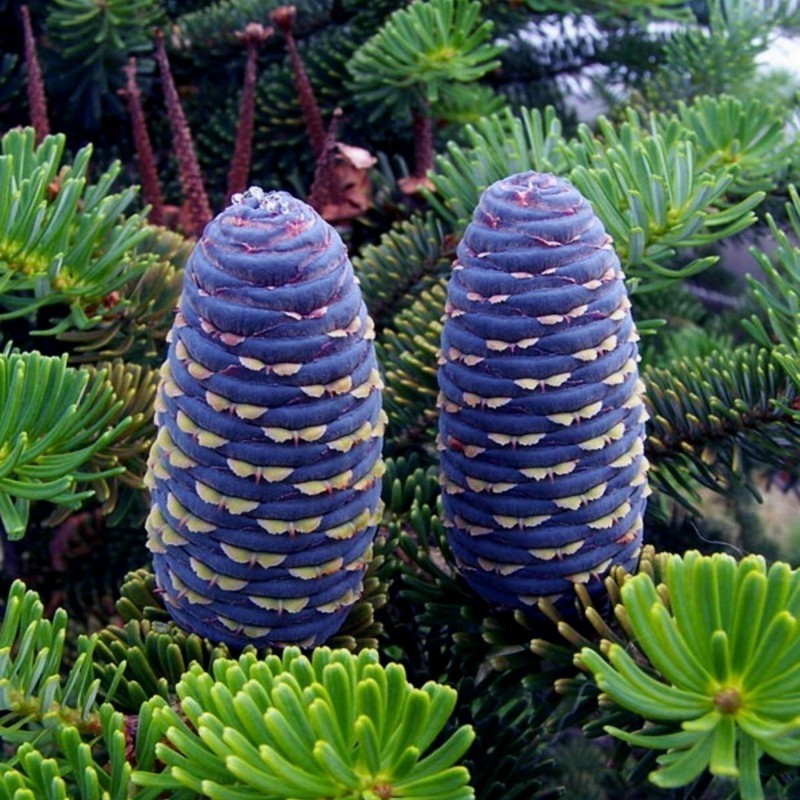
This tree belongs to a category of white pines, with needles that grow in bundles. It is native to the extended parts of Siberia to Mongolia.
From the name, you can say that it is not a Cedar tree. However, when you translate this word in Russian, it speaks ‘Siberian cedar.’
The Pine Nut Oil is made from the nuts extracted from this plant. This is a unique plant and cannot be found anywhere except in their native areas.
Identification
- Their trunks are chocolate-colored, vast, with long and soft, green needles, a part of white pine plants.
- This Cedar tree grows very slowly.
- It grows up to 24 feet during its first five years, and the cones come out when the plant is 40-70 years old and reaches the maturity stage at 200-250 years.
- Like all the Pine family members, this plant also comes with a bundle of 5 needles along with a shedding cover, and all of them are 5-10 cm long.
- This is their unique feature, the needles, which look like pine.
8. Port Orford Cedar
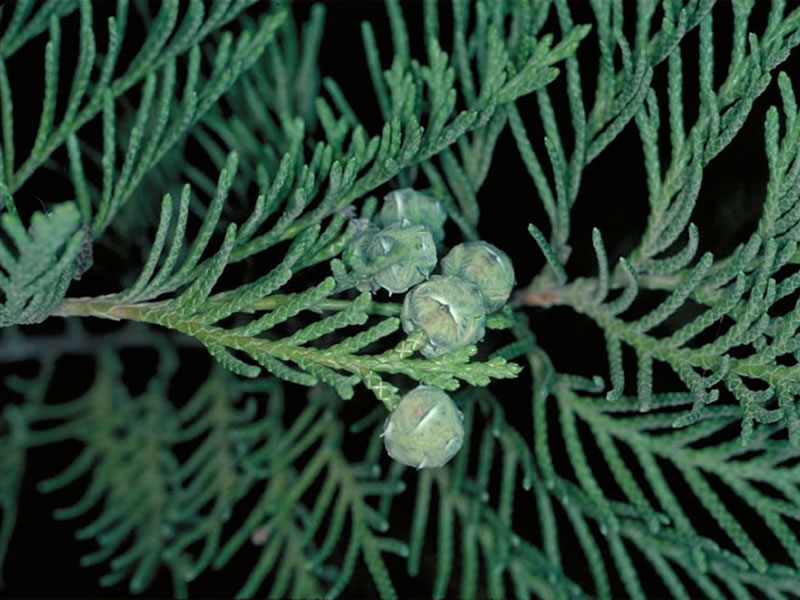
This tree gives out a fragrance of ginger and is very tall. This tree is native to the Pacific Northwest of the United States and is also known as Lawson’s Cypress.
This tree’s heartwood is yellowish-brown in color, whereas the sapwood is pale yellow-brown or almost white.
Their color seems to darken with the exposure of light and age. Its timber is strong, lightweight, and can withhold large weights.
This tree is named Port Orford because it was first discovered near that area in Oregon.
Identification
- This tree grows up to 150-200 feet tall, with 4-6 feet diameter.
- Its timber is quite strong, lightweight, durable, and can be used by both hands and machines reasonably.
- This tree is exceptionally durable and has resistance to decay, insect attacks, acid corrosion, heat, and many more.
- So, its timber is very useful for any work you want to use it for.
- This tree is used in humanity arrow shafts, woodenware, toys, musical instruments, boxes, chests, cabinets, and even as a construction item in houses or temples.
Conclusion
Cedar trees, an integral part of our ecosystems, exhibit a wide array of characteristics that make them unique and fascinating.
This cedar tree identification guide has explored both True and False Cedar Trees, shedding light on their diverse features and native habitats.
From the majestic Atlas Cedar in the Atlas Mountains to the rare Cyprian Cedar of Cyprus, each species contributes to the rich tapestry of our natural world.
Cedar trees are not only significant for their ecological benefits but also for their cultural and historical importance.
Understanding and appreciating the diversity of cedar trees is crucial for their conservation and continued presence in our environment.
Whether used ornamentally or for their practical wood properties, cedar trees continue to mesmerize and demonstrate the strength and resilience of nature.

